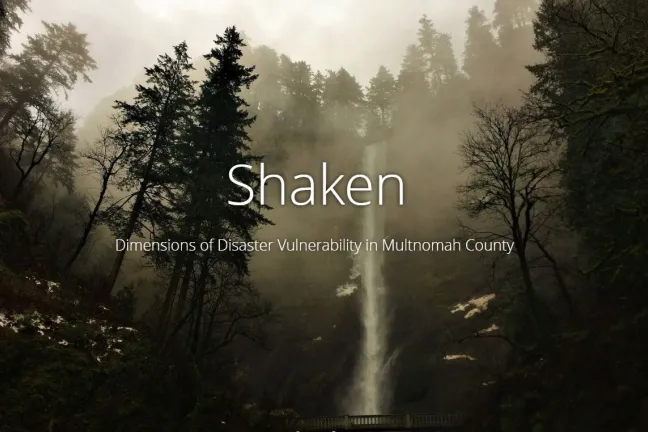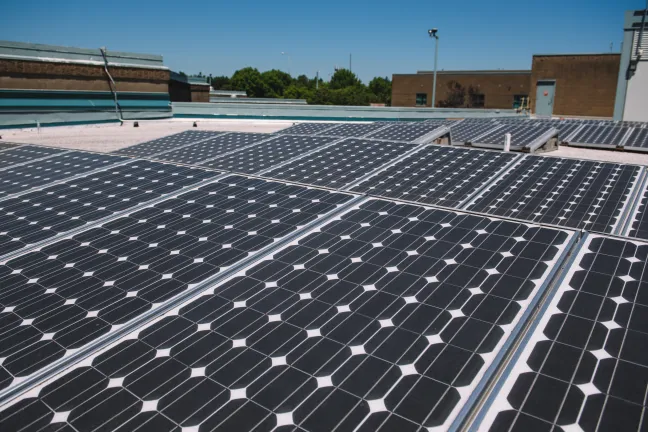The Multnomah County Office of Sustainability, with help from the Portland State Institute for Sustainable Solutions, has published a story-map to explore community disaster resilience through the use of renewable energy — pairing solar panels with battery storage in neighborhoods with people most at risk if the power goes out.
Explore the story-map by following this link.
For several years, the Institute has paired graduate students with local governments and nonprofits through a Climate Action Fellowship. Graduate student Maggie Johanesen joined Multnomah County’s Sustainability team this year to conduct a comprehensive analysis of geographic, social, and infrastructure vulnerabilities in Multnomah County, and identify recommendations for solar storage hubs, known as micro-grids.
Johanesen found that:
Seismically-stable County buildings are located in areas of high social vulnerability.
Some facilities have emergency generators, but fuel supplies are limited.
Solar arrays can only supply power in the event of an emergency if the equipment is specifically designed to “island.”
And people who depend on powered medical devices are particularly vulnerable to power outages.
A micro-grid is a network of electricity users with a local energy source, able to function independently, but often attached to the larger electrical grid.
Here’s why that matters:
The risk of a subduction zone earthquake — and ensuing landslides and soil-liquefaction — coupled with the prevalence of buildings that have not been seismically reinforced, creates a critical scenario for Multnomah County. The Oregon Department of Geology and Mineral Industries recently published an Earthquake Regional Impact analysis, predicting that damage to the electric utility grid in a Cascadia Subduction Zone earthquake could exceed $40 billion.
“In the event of a major earthquake, we anticipate our energy supply being interrupted for several months,” said John Wasiutynski, Director of the Office of Sustainability. “Many people rely on electricity to the degree that their very lives depend on it. Some medications require refrigeration, and several types of medical devices require power.”
A major earthquake would severely undermine Multnomah County's ability to provide critical health and social services. Research demonstrates that our disenfranchised communities (those who experience barriers to services) suffer the impacts of all disasters disproportionately.
The risk demands local governments prepare to provide energy following such a disaster, particularly at medical facilities and other critical community gathering points.
Investments in on-site renewable energy would increase self-sufficiency in the event of a disaster. A solar microgrid can produce and store energy continuously during normal operations and then act as an island providing power to a specific facility when power supplies are interrupted. On-site solar photovoltaic generation with battery storage could mitigate the dramatic impact from weeks or months without power.
Following the completion of the analysis, Multnomah County began work with the Energy Trust of Oregon to identify potential project sites, beginning with County-owned buildings. The project may expand to additional projects with partner organizations.
“We want to increase our dependence on solar and increase our resilience in the face of an emergency,” Wasiutynski said.


